The Mojave National Preserve is an incredible under-the-radar destination. With a mountainous backdrop, lava tubes and the Kelso Dunes in the Mojave desert, there is a lot to explore. If you are interested in Mojave National Preserve hiking, camping under the stars, or just wondering what things to do in the Mojave National Preserve, then this guide is for you!
Pin Me for Later!
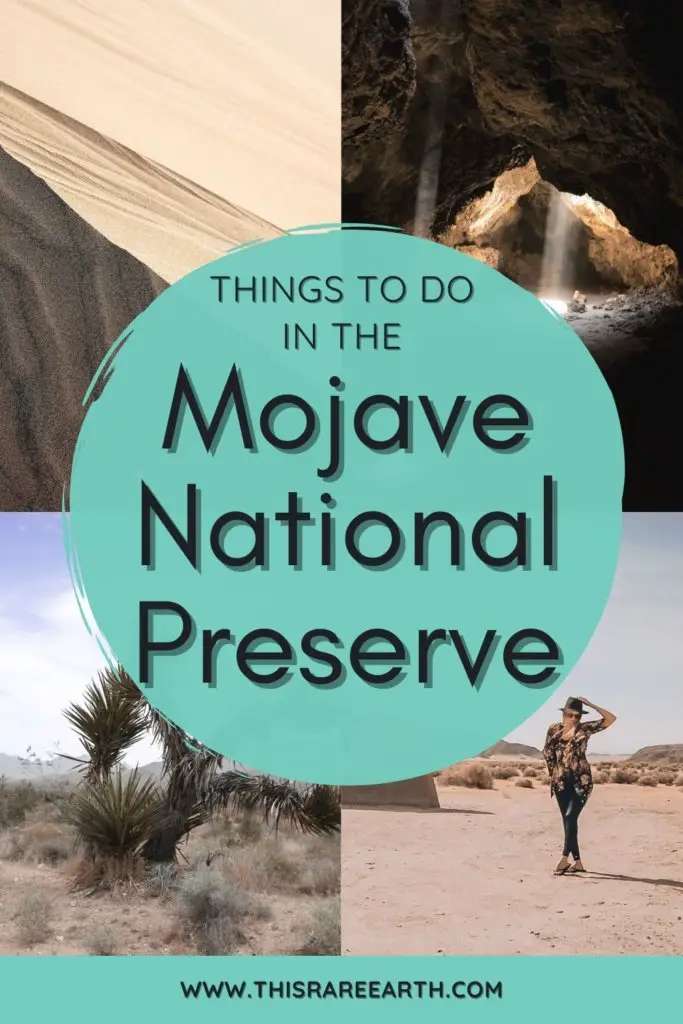
Visiting the Mojave National Preserve is like stepping back in time.
The land is untouched; wild; rugged. This is what California must have looked like when the first settlers rumbled in on wagons.
Nestled between Los Angeles and Las Vegas, this untamed stretch of desert land is home to several natural hidden gems. Giant sand dunes, lava beds, and rugged mountains cover the preserve. It is even home to more Joshua Trees than Joshua Tree National Park.
Though managed under the National Park Service system, this protected land is not heavily visited and has stayed primarily under the radar. It is often overlooked and forgotten.
I’m not quite sure why that is!
Mojave National Preserve is absolutely worth a visit, and I’d like to share exactly why.
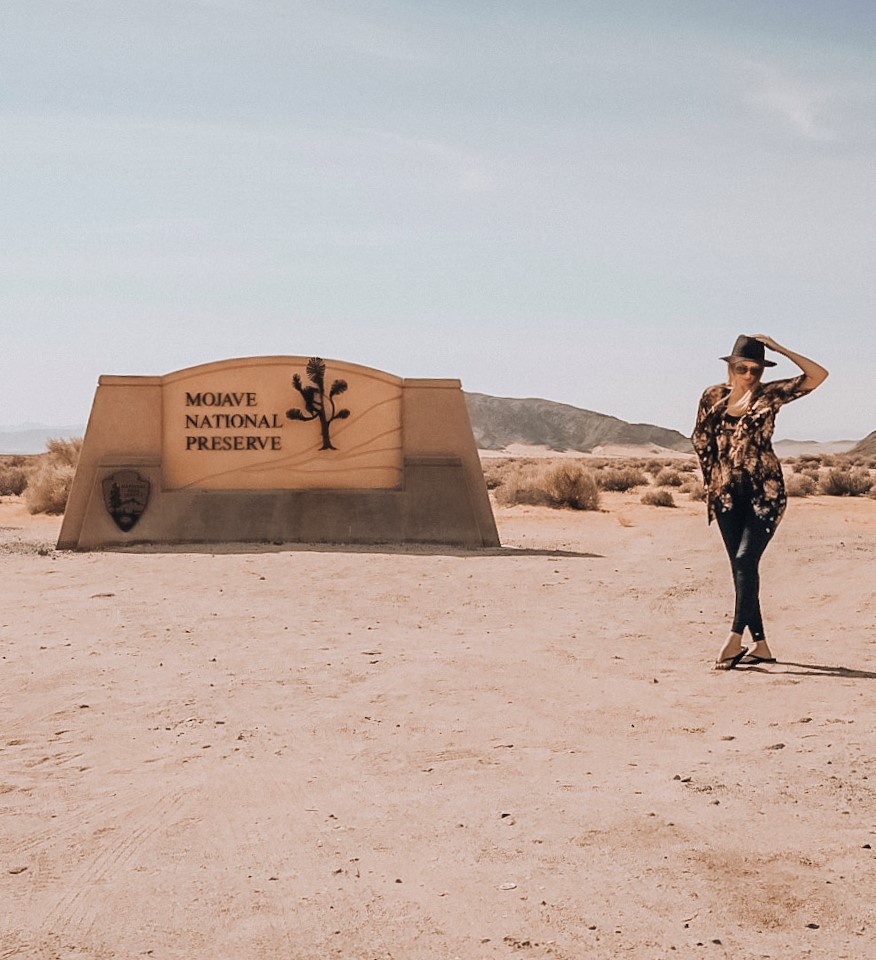
What Is the Difference Between a National Park and a National Preserve?
The National Park Service manages both types of protected land, but the activities allowed on the lands may be different. National Parks prohibit hunting and fishing, while National Preserves may allow it.
The Mojave National Preserve was designated in 1994. It is most notable for its vast desert terrain and few signs of civilization. Scattered across the preserve are remnants of the Gold Rush era, like the Kelso Depot, and Native American artifacts like petroglyphs.
The preserve feels incredibly isolated. Many of the roads across this 1.6 million acre park are unpaved, and very few visitors come to explore them.
Where is the Mojave National Preserve?
Mojave National Preserve is located in San Bernardino County in Southern California. It is roughly 2.5 hours from Los Angeles, and near the Nevada border.
When To Visit
Deserts are known for extreme temperatures, and the Mojave National Preserve is no exception. It sits in the high desert, with elevations ranging from 1,000 to 8,000 feet.
Spring (March – May): Easily the best time to visit, Spring temperatures are mild – typically between 40-85 degrees. Colorful wildflowers blanket the desert floor, exploding with a pop of color. This is the best season for hiking.
Summer (June – September): Triple digits become a near-daily occurrence in the heart of summer. Intense heat and sunshine beats down from the sky. Hike or explore with caution.
Fall (October – November): The heat begins to subside into the 40-85 degree range once again. The nights begin to get cooler, and visitors are sparse. Hiking and activities become more bearable.
Winter (December – February): Winter in the desert is another great time for long or strenuous hikes. The occasional snowfall may dust the higher elevation areas. The air is cool but the sun is warm, but rainfalls are possible. Flash floods may occur.
I recommend visiting the park for at least one full day or across a weekend, preferably in Spring or Fall. You can hike, camp, and experience some of the unusual rock formations..
Things To See in the Mojave National Preserve
Because of its remote location, GPS and cell signal are unreliable throughout much the park. Be sure to download the official park map before heading out.
You May Also Like: Things to Do in the Mojave Desert
Cinder Cone Natural Area
This complex consists of over 20 large jagged red and black rock cones jutting out from the desert floor. These are quite a sight! Formed over 7 million years ago, Kelbaker Road is lined with them.
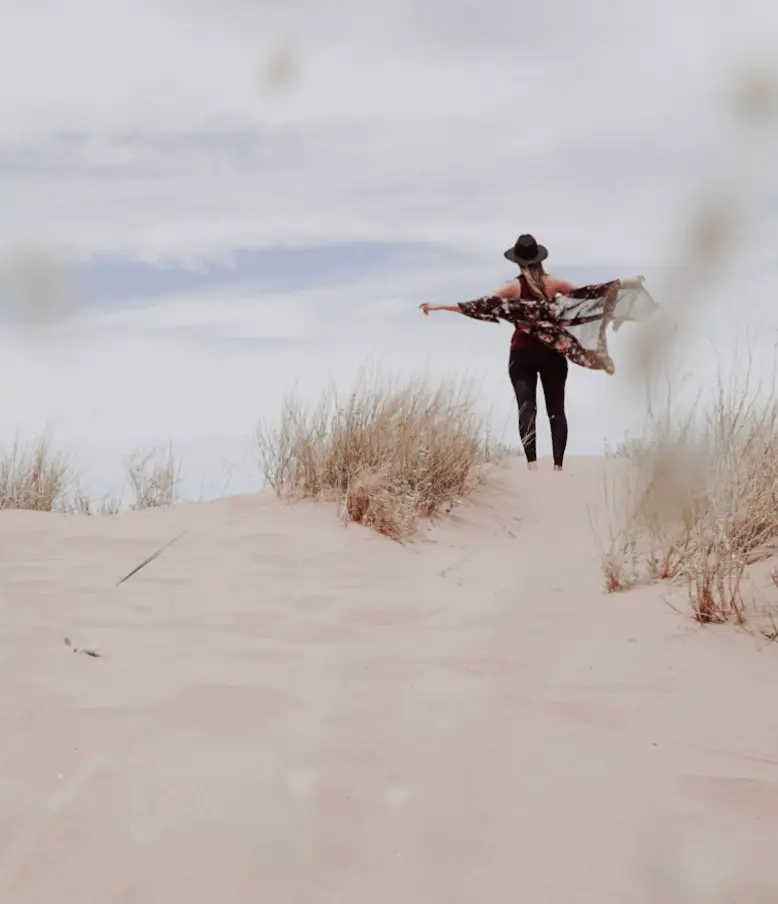
Kelso Dunes
If you’ve been around here for a while, then you know how obsessed I am with the Arabian Desert.
The Kelso Dunes are a far cry from how vast those dunes are, but it’s like a small pocket of the Middle East was delivered right to Southern California. It is one of my favorite sights in the entire preserve.
Sitting on the southwest edge of the park, the dunes tower to more than 600 feet tall, making them some of the tallest dunes found in the United States.
It is possible to hike into Kelso Dunes. More on that below.
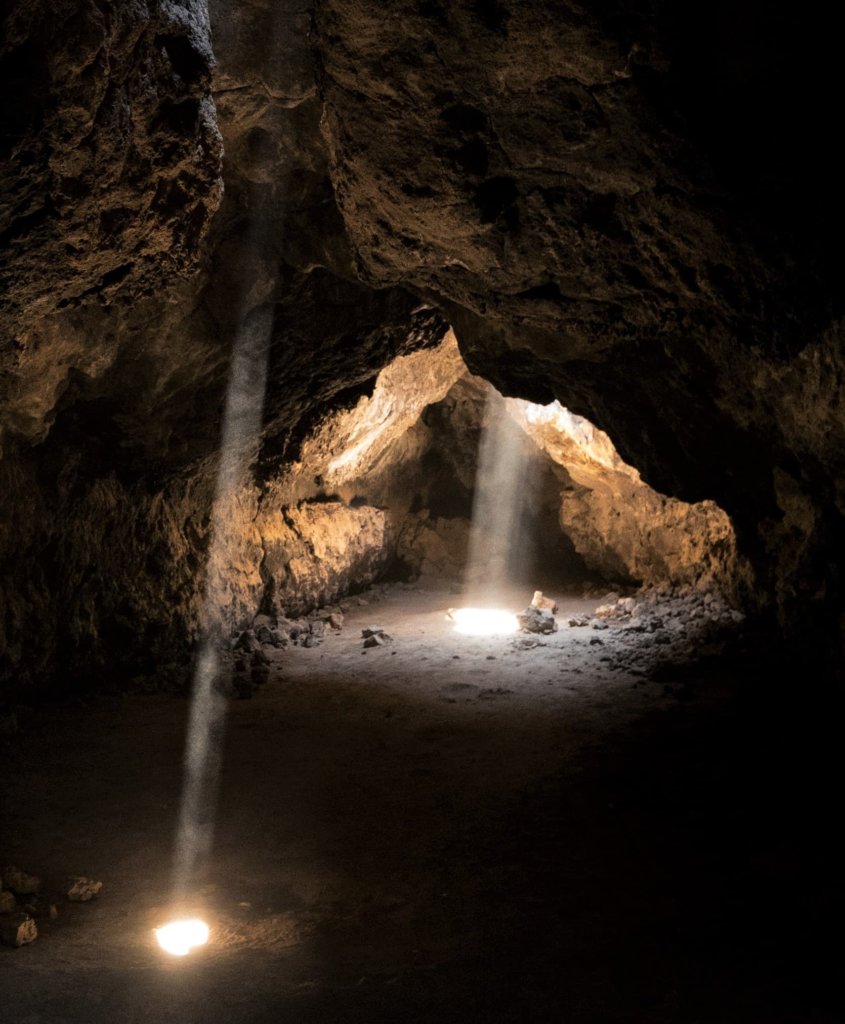
The Lava Tubes
One of the top things to see in the Mojave National Preserve, the Lava Tubes are located several miles down the unpaved Aiken Road.
Visitors can climb down into the lava tubes from the collapsed tunnel ceiling. The light shining down onto the lava floor is one of the most incredible views in the preserve.
Check the status of the Lava Tubes before you drive to the Preserve. This area does occasionally get closed off to visitors.
Lastly, enter at your own risk! These tunnels are not maintained by the NPS.
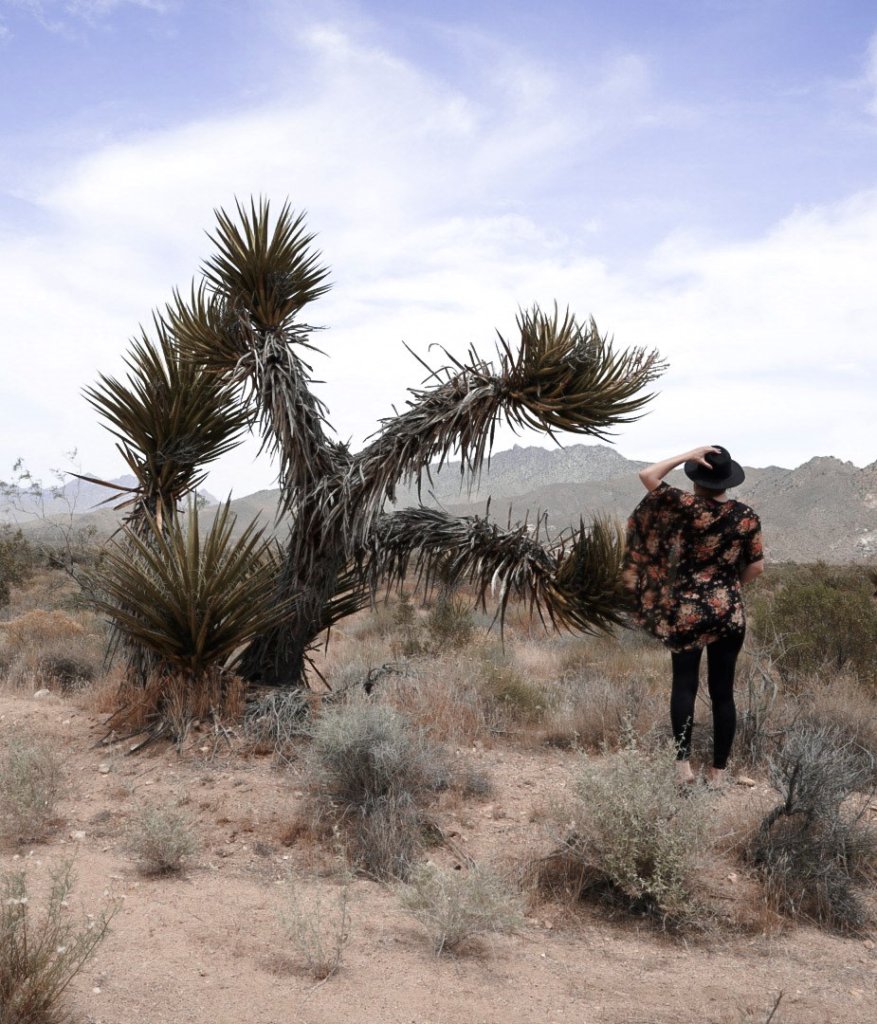
Mojave National Preserve Joshua Tree Forest
One fact that I just can’t seem to get over; The Mojave National Preserve houses more Joshua Trees than Joshua Tree National Park.
Though it is more than one hour north of the better-known park, it is absolutely covered in them! In fact, it is the largest and densest Joshua Tree forest in the world.
Hiking Trails in the Mojave National Preserve
If you are an avid hiker, I have good news and bad news for you.
The bad news is, for as vast as the Mojave National Preserve is, there are surprisingly few hiking trails. A handful of designated trails are scattered across the 1.6 million acres, but it is far fewwer than you might think.
The good news is, what this Preserve lacks in quantity, it makes up for in quantity. There are several standout hikes worth exploring.
But first, let’s talk about the desert.
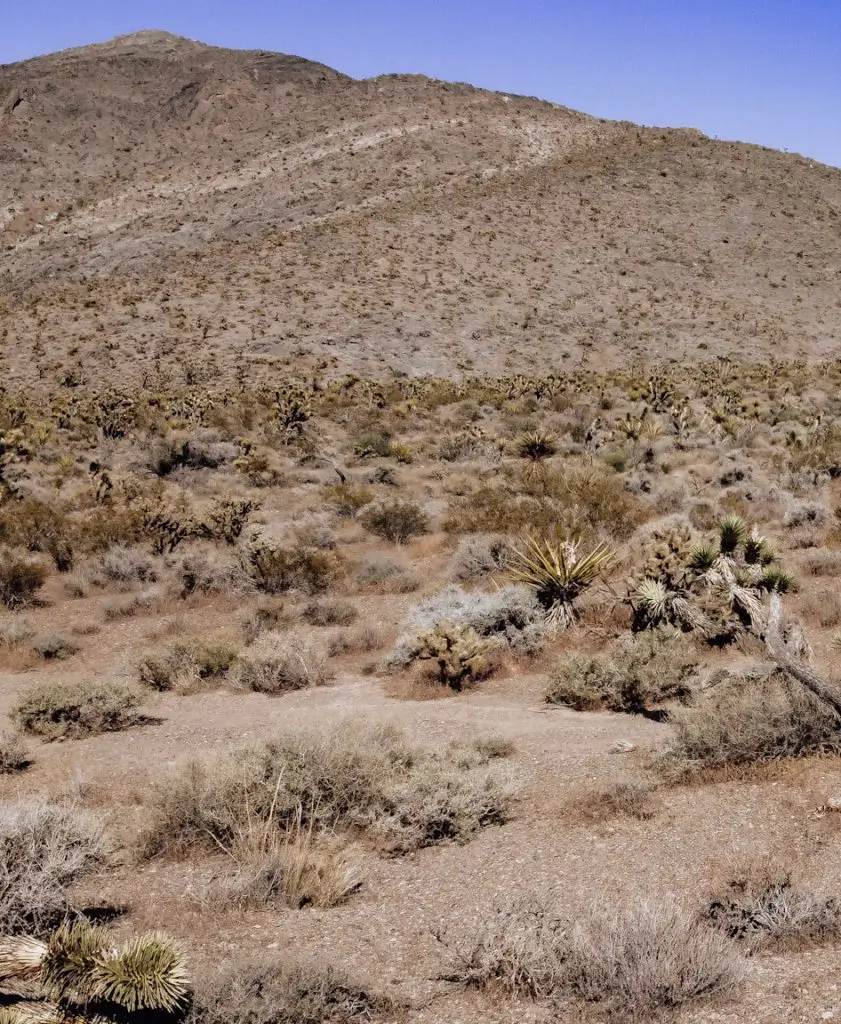
One of the reasons I love the desert is the vast land and solitude. This particular desert is desolate. This means that you should take extreme caution.
Gas and service stations are located a ways outside of the park. Plan ahead and prepare wisely, with air in the tires and a full tank of gas. Check out my solo road trip guide for details.
Also, the Mojave desert gets HOT. If you are not experienced in desert hikes, please read up on the desert hiking gear needed for such treks. Dehydration and even death are real concerns.
Part of the beauty of the Mojave National Preserve is how empty and desolate it is. But truth be told, in all the times I’ve visited, I’ve only seen a ranger truck once. Expect that you will be on your own.
Kelso Dunes Hike
The Kelso Dunes hike begins low, in desert brush soft rolling hills. The trail gradually dissipates, and hikers can take various routes up and over the dunes.
The full trail is a Moderate 2.5 miles across the sand. If you’ve never hiked on dunes before, be prepared for a workout! The summit may be tough to reach but the final view is worth the effort.
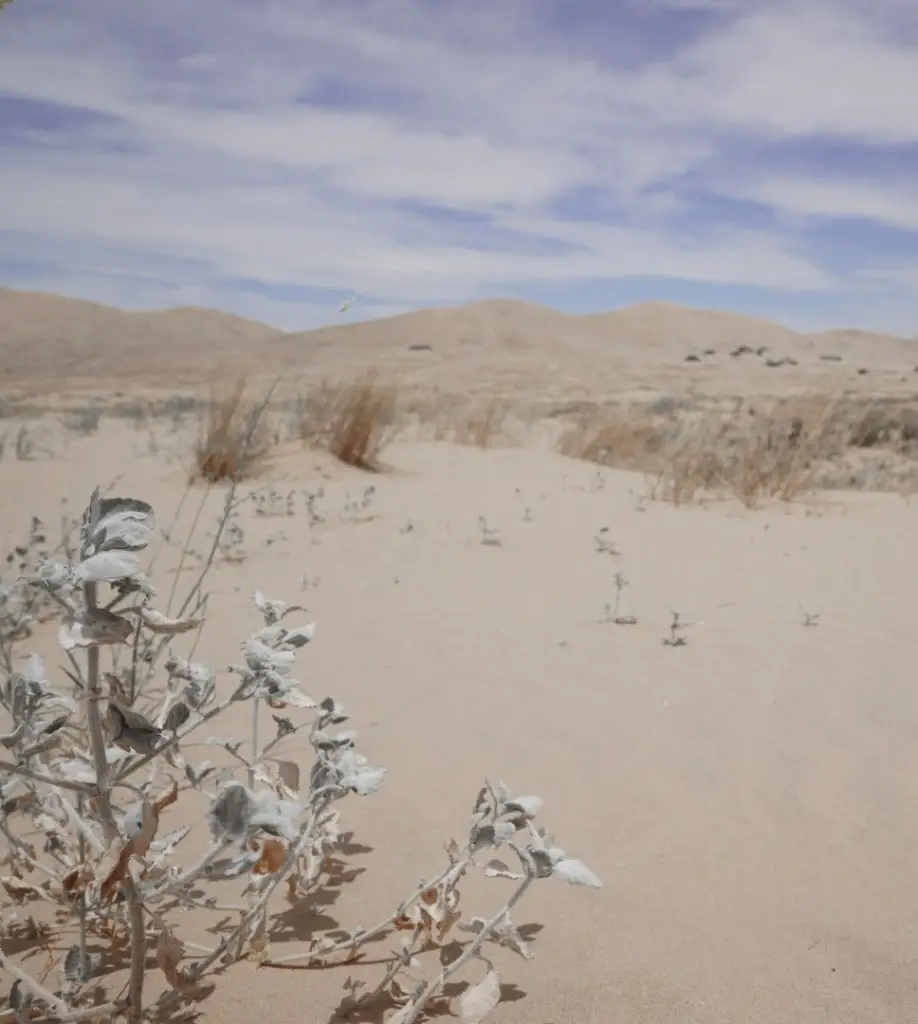
Hole in the Wall Rings Trail
This 1.3 mile loo is a Moderate trek, meandering through narrow canyons with pock-marked walls. Know in advance that a bit of rock scrambling is required to complete this hike.
Note that a high clearance vehicle is needed to reach the trailhead.
Rock Spring Loop
Near the center of the Preserve, this Moderate 1.6 mile loop is one of the best wildflower spots in the springtime. The trail leads to a spring as well as the ruins of a rock house. It’s a fun trail to explore if you want to see some extra features.
Camping in Mojave National Preserve
The Mojave National Preserve has two designated campgrounds within the park boundaries. Both are located toward the center of the park and are first come first serve. No reservations are allowed.
The Mid Hills Campground is higher in elevation, meaning cooler nights and different scenery. The road to reach it is unpaved, though, so it is a bit harder to reach.
The Hole-in-the-Wall Campground, on the other hand, is lower in elevation and easier to reach.
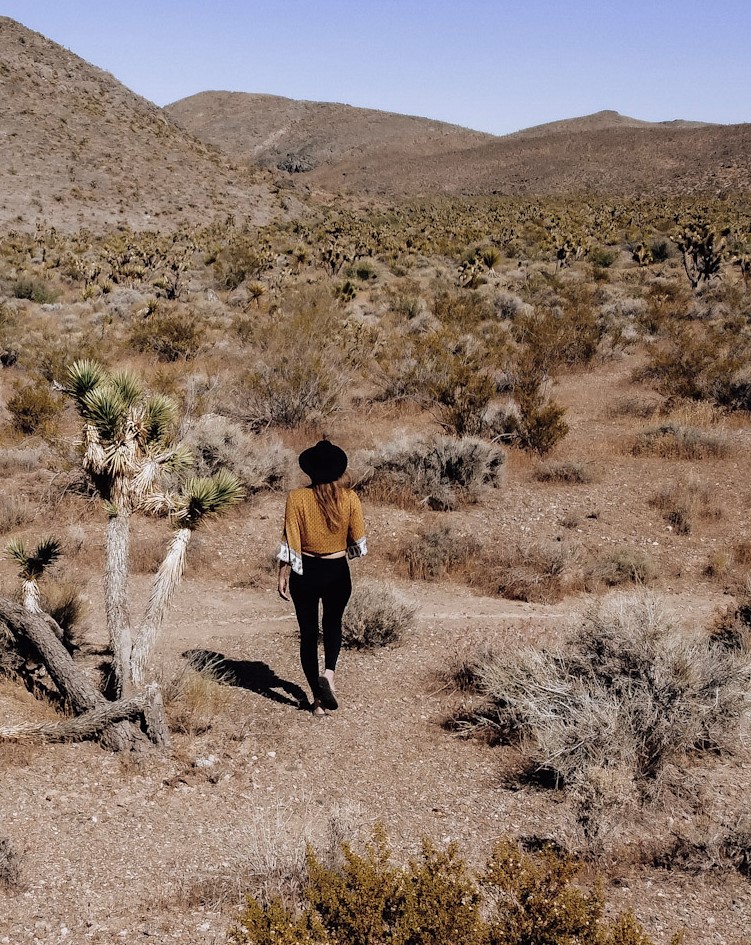
Both campgrounds cost $12 per site and have pit toilets, potable water, fire rings, and picnic tables. No food or water is available inside the park, so pack your own. More information can be found here.
This often-overlooked desert park is such a hidden gem! I’m not sure why it’s so often overlooked, but frankly, that’s part of the beauty. Desert solitude at it’s finest.
Plan ahead to visit the wild and untamed Mojave National Preserve, and I promise you that the hidden gems are well worth the extra effort!
- 10 Things to Know Before Visiting the Sheik Zayed Grand Mosque
- Solo Female Travel in the Middle East – Is it Safe?
- 30 Most Beautiful Places in the Middle East You NEED To See
- 10 Interesting Facts About Afghanistan, From Someone Who Has Traveled There
- 10 Best Beaches in Muscat, Oman: The Ultimate Guide
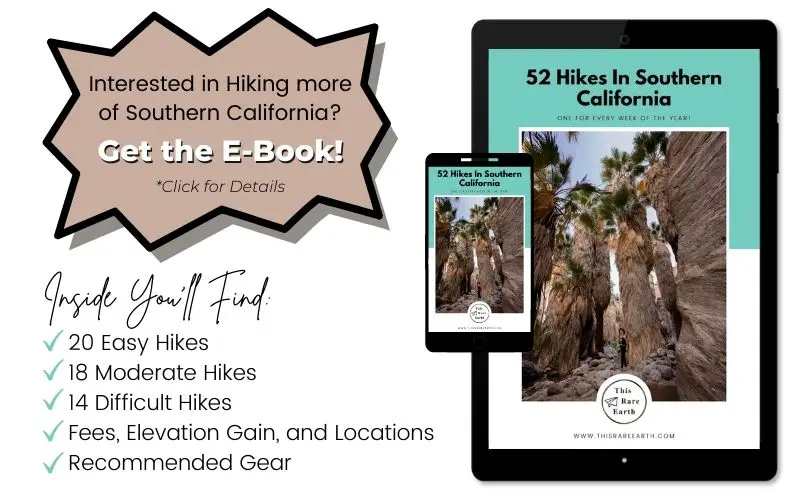
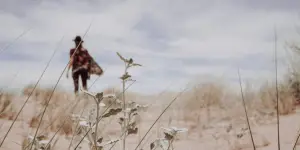
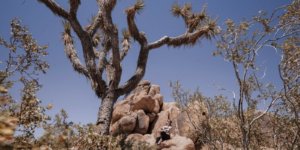
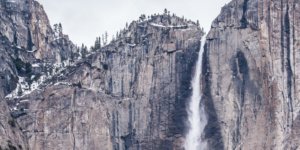

Leave a Reply